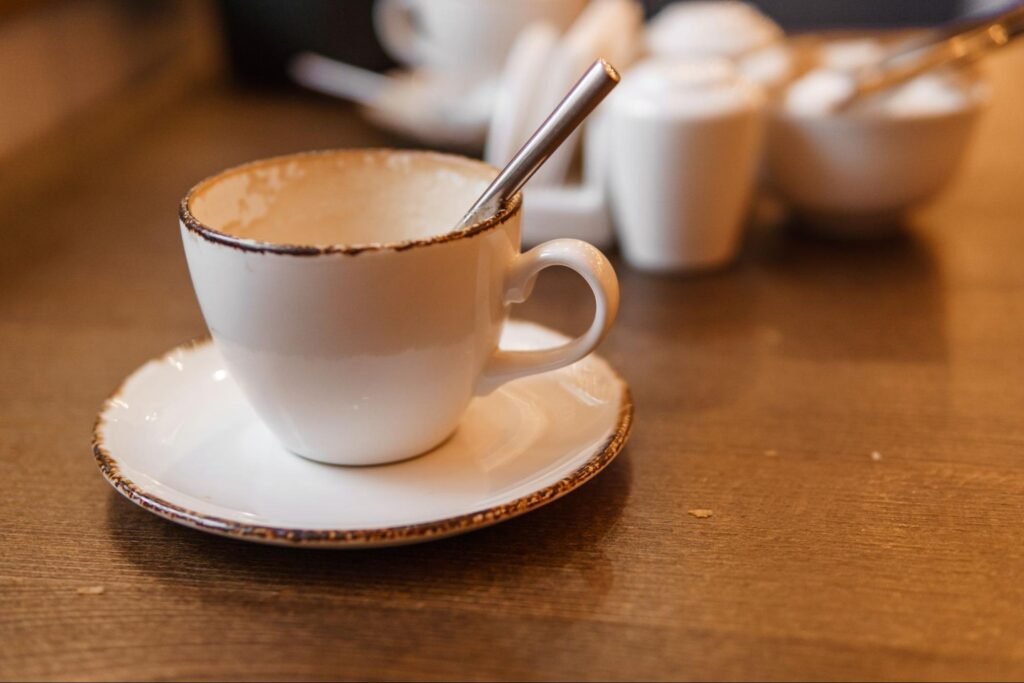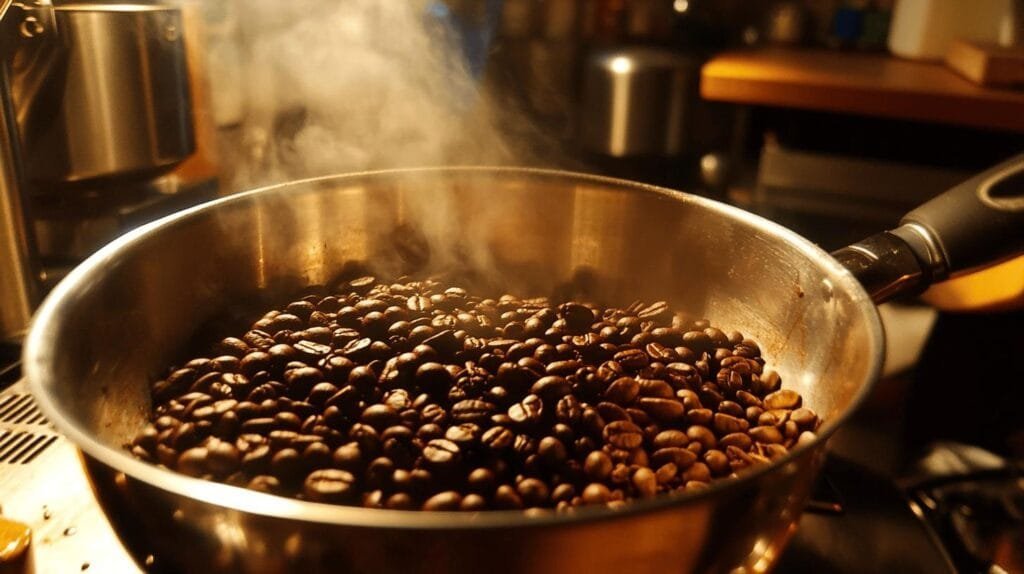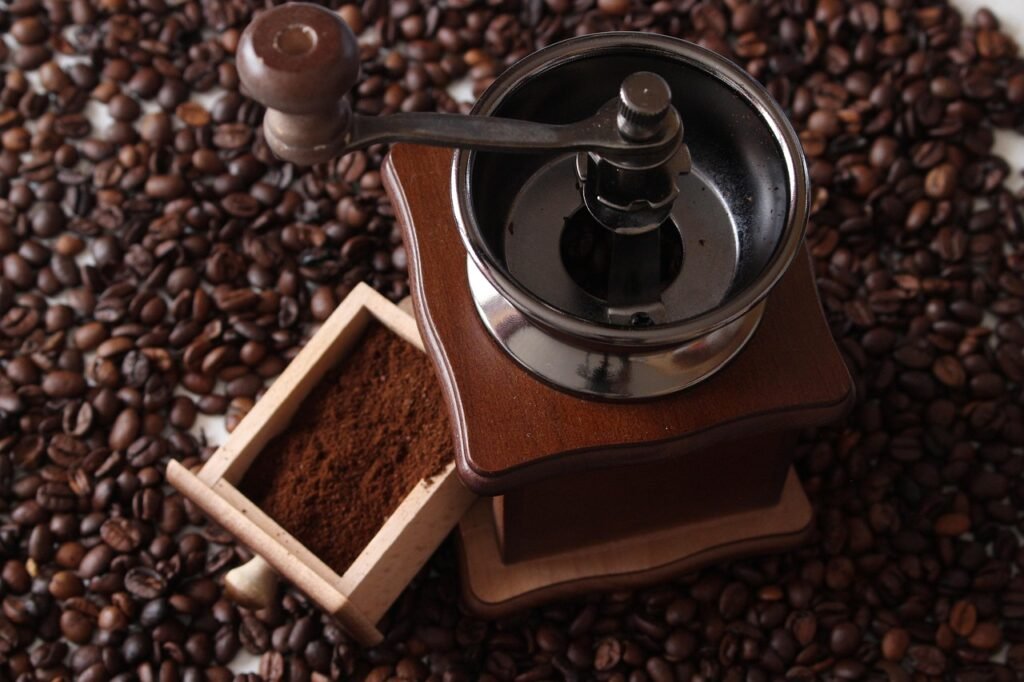
Artisanal Rituals for a Memorable Customer Experience
How can brands create a more balanced and memorable customer experience by blending artisanal product quality with thoughtful everyday rituals that keep people coming back?

Coffee roasting equipment plays a key role in changing green coffee beans into that aromatic, flavorful morning cup. Whether you’re a novice or an experienced coffee aficionado, understanding the right equipment can improve your home roasting journey.
For the curious searcher, here’s a quick rundown of what you need:
Roasting your own coffee at home lets you explore a variety of flavors and techniques, putting the power in your hands to craft the perfect brew. As experienced home roaster Dave Borton puts it, it’s about having fun and expanding your experience with food. It’s a rewarding hobby that requires patience but offers endless possibilities to suit your tastes.

Coffee roasting equipment is the backbone of any home roasting setup. These tools help transform green coffee beans into the delightful brew we all love. Let’s explore the essentials:
The heart of your roasting journey is the roaster machine. The Fresh Roast SR540 is a popular choice for beginners. It’s easy to use and has adjustable settings to help you craft your ideal roast. For those seeking more control, the Behmor 2000AB offers customizable roast profiles, making it a versatile option for both novices and seasoned roasters.
A thermometer is crucial for keeping an eye on the temperature during roasting. Consistent temperatures ensure that your coffee beans achieve the desired roast level. This tool helps prevent under- or over-roasting, which can affect flavor and aroma.
After roasting, beans need to cool quickly to stop the cooking process. A cooling tray does just that. It helps preserve the beans’ flavor and aroma by rapidly lowering their temperature. This step is vital to maintain the quality of your roast.
While not essential, analysis tools can be beneficial for those who want to fine-tune their roasting skills. These tools allow you to assess roast profiles and make adjustments for future batches. They offer insights into the beans’ development and can guide you in achieving consistent results.

Roasting coffee at home offers a unique opportunity to explore different flavors and techniques. With the right equipment, you can tailor each roast to your personal taste. As home roasting enthusiast Dave Borton suggests, it’s a chance to have fun and expand your culinary skills. Embrace the journey and enjoy the process of creating your perfect cup.
When diving into coffee roasting, choosing the right coffee roasting equipment is key. Two popular types of roasters are air roasters and drum roasters. Each has its own approach to roasting and flavor profile.
Air Roasters (Fluid Bed Roasters):
Air roasters, also known as fluid bed roasters, work like a popcorn popper. They use hot air to roast the beans. This method is known for producing a brighter and cleaner flavor profile. Air roasters are great for those who enjoy the natural flavors of the coffee bean, like floral or fruity notes. The Fresh Roast SR540 is an example of a user-friendly air roaster, perfect for beginners. It’s easy to see and hear the beans as they roast, which helps you learn the process quickly.
Drum roasters, on the other hand, use a rotating drum to roast the beans. This method combines convection and conduction heat, resulting in a richer and more traditional flavor profile. Drum roasters are favored by many professional roasters because they highlight the bean’s unique traits. The Hottop Digital Drum Roaster is a popular choice for those who want more control over their roast. It offers variable temperature and time settings, allowing for a more customized roast.
Hybrid Roasters:
For those who want the best of both worlds, hybrid roasters offer a combination of air and drum roasting methods. These roasters aim to balance the bright notes of air roasting with the full-bodied flavors of drum roasting. While not as common, hybrid roasters provide versatility for those exploring different roast profiles.

When choosing between air and drum roasters, consider the flavors you prefer. If you enjoy a light, crisp cup, an air roaster might be your best bet. For those who love bold, deep flavors, a drum roaster could be the way to go. Roasting coffee is both an art and a science, and experimenting with different roasters can help you find the perfect brew for your taste.
Selecting the right coffee roasting equipment can be an exciting yet challenging task. Several factors come into play, such as the volume of coffee you plan to roast, your preferred roast level, budget constraints, and the space available for your setup. Let’s break these down to help you make an informed choice.
Volume:
The amount of coffee you intend to roast at a time is crucial. If you’re a casual home roaster, a smaller machine like the Fresh Roast SR540 might suffice. It can handle small batches and is perfect for experimenting with different roast profiles. However, if you’re considering roasting larger amounts, perhaps for a small business, you might need a larger drum roaster that can handle higher volumes efficiently.
Roast Level:
Your preferred roast level—light, medium, or dark—can influence the type of roaster you choose. Air roasters are often favored for lighter roasts, offering a clean and bright flavor. On the other hand, drum roasters excel at achieving deeper, more complex flavors typical of medium to dark roasts. The Hottop Digital Drum Roaster is known for its ability to provide precise control, which is essential for achieving the perfect roast level.
Budget:
Budget is always a consideration. Coffee roasting equipment varies widely in price. Entry-level machines like the Behmor 2000AB offer a good balance of features and affordability, making them ideal for beginners or those on a budget. As you progress and require more advanced features, investing in a more sophisticated machine might be worthwhile.
Space:
Finally, consider the space available for your roasting setup. Some machines are compact and can fit comfortably on a kitchen countertop, while others require more room. Ensure you have enough space for the roaster and any additional equipment, like a cooling tray or storage for green beans. Compact options like the Fresh Roast SR540 are excellent for those with limited space.

Considering these factors—volume, roast level, budget, and space—will better equip you to choose the coffee roasting equipment that suits your needs and preferences.
Starting on your coffee roasting journey can be thrilling and a little daunting. The right equipment makes all the difference. Let’s explore some beginner-friendly options that offer ease of use, customization, and safety.
1. Behmor 2000AB
The Behmor 2000AB is a favorite among beginners. This roaster is user-friendly and comes with both programmed and manual options. Whether you’re just starting or have some experience, it adjusts to your needs. One standout feature is its safety mechanism. If you’re not around to press a button during the roast, it will automatically switch to cooling mode. This prevents the beans from burning—a common issue if left unattended. Always remember: read the manual first!
2. Fresh Roast SR540
If you’re looking for something compact and straightforward, the Fresh Roast SR540 is an excellent choice. This air roaster is perfect for small batches, allowing you to experiment with different roast profiles. Its intuitive controls make it easy for anyone to get started. Plus, you can see the beans as they roast and hear the first crack, giving you real-time feedback on the process. It’s a great way to learn without feeling overwhelmed.
3. Hottop Digital Drum Roaster
For those wanting a bit more sophistication, the Hottop Digital Drum Roaster offers a balance of control and simplicity. This drum roaster provides more nuanced flavors, ideal for those who want to refine their roasting skills. It offers precise control over temperature and time, allowing you to develop a deeper understanding of the roasting process. Though it has a slight learning curve, it’s a rewarding choice for those eager to dig into the art of coffee roasting.
Choosing the right coffee roasting equipment as a beginner can set you on the path to crafting the perfect cup. Whether you opt for the straightforward Fresh Roast SR540, the versatile Behmor 2000AB, or the sophisticated Hottop Digital Drum Roaster, you’ll find a machine that grows with you as you hone your skills.
To start roasting coffee at home, you’ll need a few essential pieces of coffee roasting equipment:
Roaster Machine: This is the heart of your setup. Whether you choose an air roaster or a drum roaster, the machine will determine how your beans are heated and how the flavors develop.
Thermometer: Keeping track of the temperature is crucial. A thermometer helps ensure your beans reach the right temperatures at different stages of roasting.
Cooling Tray: Once your beans are roasted, they need to cool quickly to stop the roasting process. A cooling tray helps with this, preventing over-roasting and preserving flavor.
Professional roasters often use drum roasters. These machines have a rotating drum where the beans are tumbled and heated. The heat source can be gas or electric, and it’s applied directly or indirectly to the drum.
Air flow is another key component. It helps control the temperature and removes chaff (the outer skin of the coffee bean that comes off during roasting). Listening for the “first crack” is essential, as it signals the beans are reaching the right roast level. Professional roasters frequently adjust heat and air flow to fine-tune the flavor profile.
Starting a coffee roasting business can indeed be profitable, but it requires careful consideration of several factors:
Starting Cost: Initial investment can be significant. Costs include purchasing roasting equipment, securing a location, and obtaining necessary licenses.
Business Growth: With the right strategy, your business can grow. Focus on building a strong brand, sourcing quality beans, and offering unique roast profiles to stand out.
Profitability: The coffee market is competitive, but there’s a growing demand for specialty and locally roasted coffee. If you manage costs well and build a loyal customer base, profitability is within reach.
Roasting coffee is both an art and a science. Whether you’re a hobbyist or looking to start a business, understanding the equipment and process is key to success.
At Equipoise Coffee, we focus on ethical sourcing and precise roasting to bring out the best in every bean. By prioritizing direct relationships with farmers, we ensure fair practices and sustainability. Our roasting process is meticulous, allowing us to highlight the unique flavors of each batch. Whether you’re a beginner or a seasoned coffee enthusiast, our commitment is to deliver a delightful coffee experience every time.

At Equipoise Coffee, the journey from bean to cup is crafted with a commitment to excellence. Our focus on ethical sourcing ensures that every cup supports fair practices and environmental care, aligning with our values and those of our customers. By partnering with growers who share our dedication to quality and sustainability, we ensure that each bean we roast is not only exceptional in taste but also responsibly sourced.
Our precise roasting process is at the core of what makes Equipoise Coffee unique. We roast in small batches to maintain the freshness and nuanced flavors that our customers have come to love. This meticulous attention to detail allows us to bring out the natural sweetness and complexity in every bean, resulting in a smooth, well-balanced cup with no bitterness.
For coffee enthusiasts or coffee shop owners ready to explore the art of roasting, choosing the right coffee roasting equipment is crucial. Whether you’re a beginner or a seasoned roaster, understanding the tools and techniques can lift your coffee experience. At Equipoise Coffee, we offer resources and tips to help you on this journey, ensuring that every roast meets our high standards of quality and balance.
Experience the perfect harmony of flavor and ethics with Equipoise Coffee. Join our community of coffee lovers and explore our range of freshly roasted coffees today. Find more at our shop.

How can brands create a more balanced and memorable customer experience by blending artisanal product quality with thoughtful everyday rituals that keep people coming back?

Independent coffee shops have always been about more than caffeine—they’re hubs of creativity, connection, and care. As café culture continues to evolve, new trends are

Introduction Independent cafes win when they feel like the neighborhood’s living room and operate with the discipline of a great kitchen. Below is a quick

Discover how top specialty coffee brands create lasting loyalty through storytelling, sourcing, and community connection. Real tips from 6 industry experts.

Discover the ultimate showdown between two beloved coffee brewing methods: the French press and Chemex. Explore how each technique caters to distinct palates, with the French press delivering bold flavors and the Chemex presenting a bright, clean taste.

Unlock the secrets to brewing the perfect cup of coffee with our comprehensive guide on using a coffee scale. Discover how precise measurements enhance flavor and consistency while eliminating bitterness.

Discover how water temperature plays a vital role in brewing the perfect cup of coffee. This article delves into the ideal temperature range of 195°F to 205°F for optimal flavor extraction, enhancing the enjoyment of high-quality beans.

Discover the world of curated specialty coffee bundles, perfect for enthusiasts seeking quality and craftsmanship. This article explores the benefits of ethically sourced, small-batch beans from brands like Equipoise Coffee, offering diverse flavor profiles that elevate your brewing experience.

Discover the art of manual brewing to elevate your coffee experience! This article explores various techniques like pour-over, French press, and AeroPress, revealing how they enhance flavor and your connection to every cup.